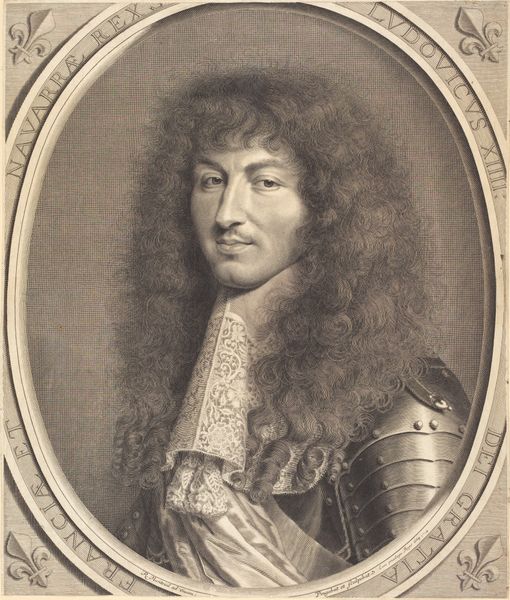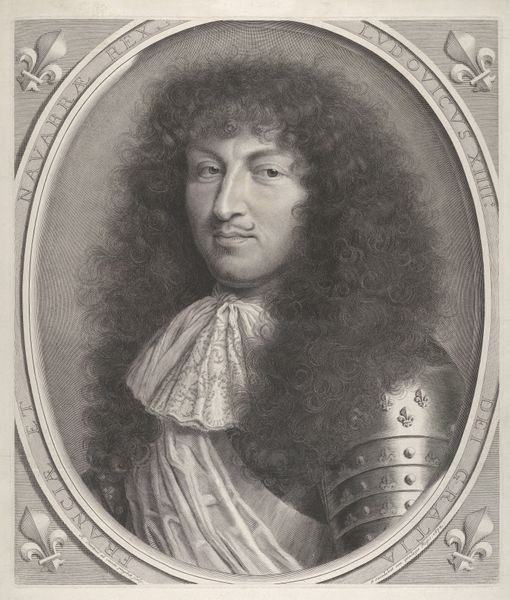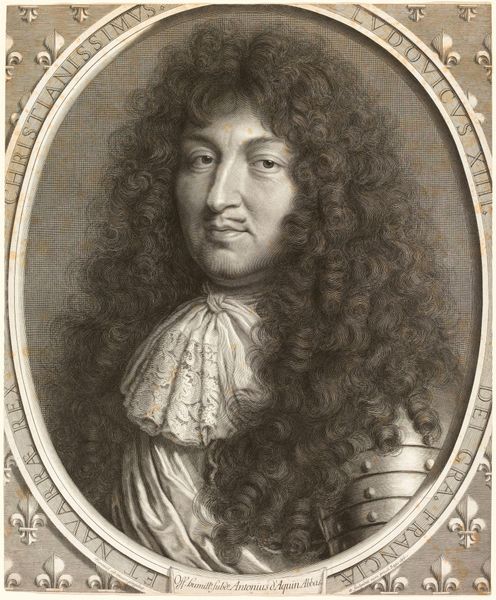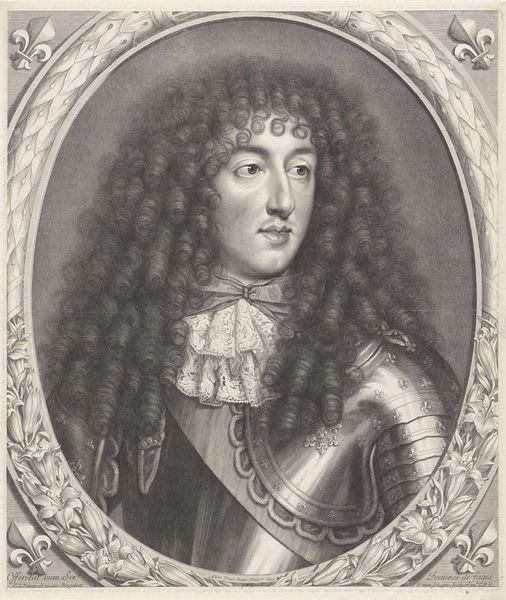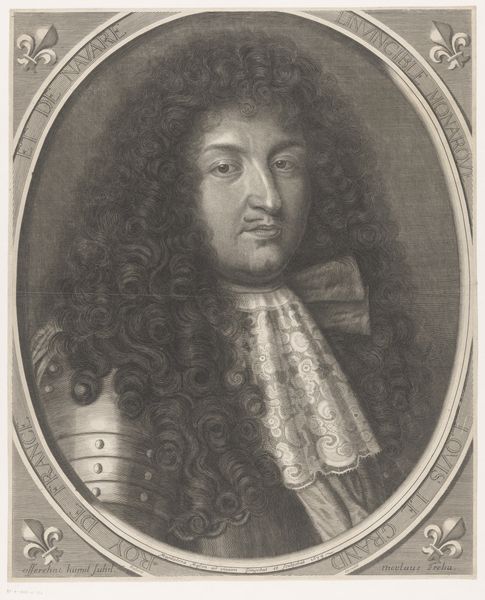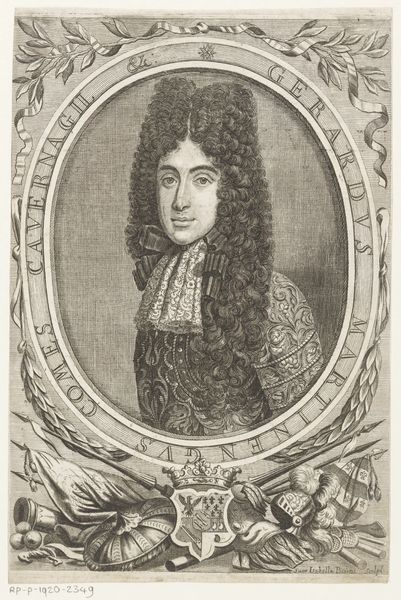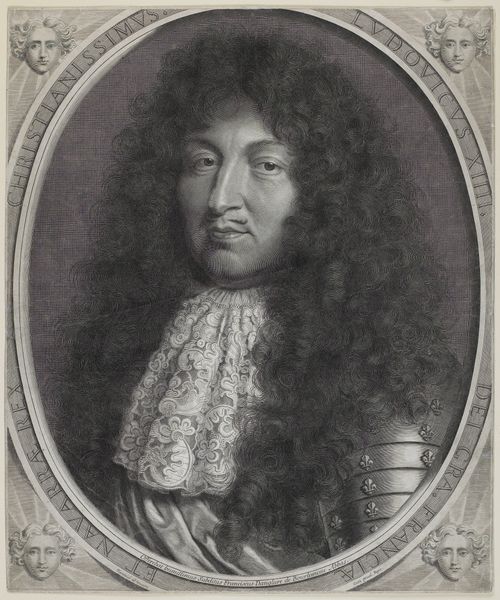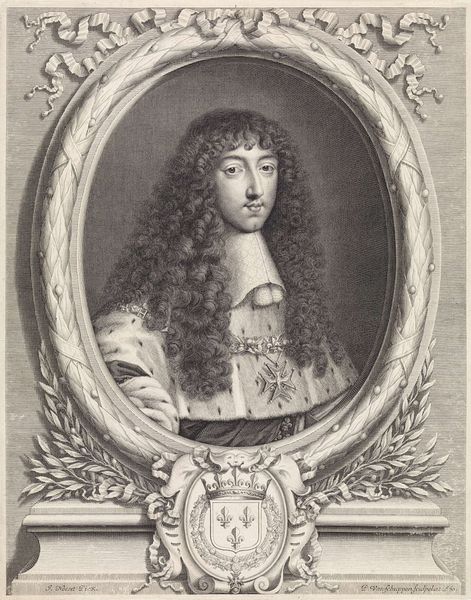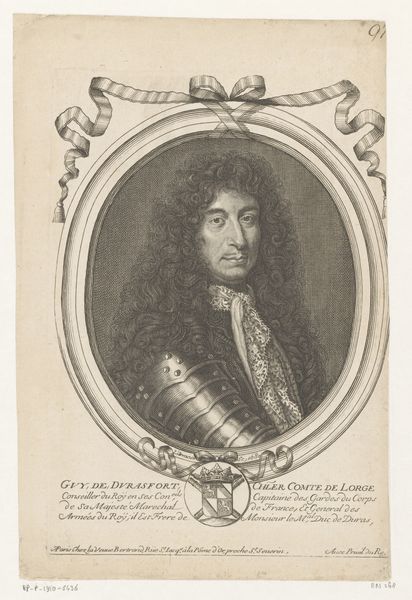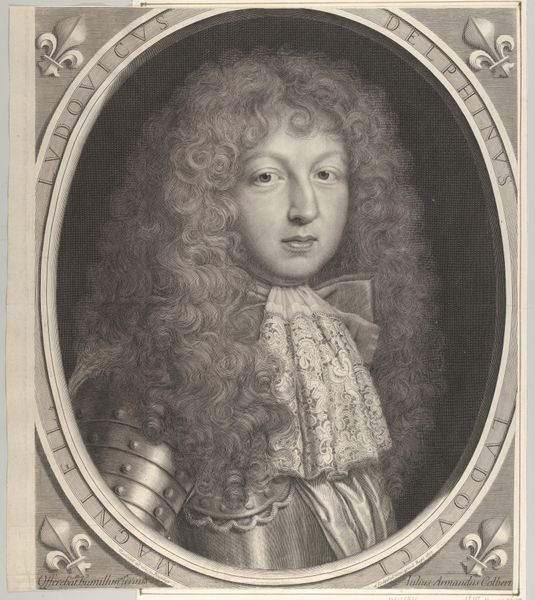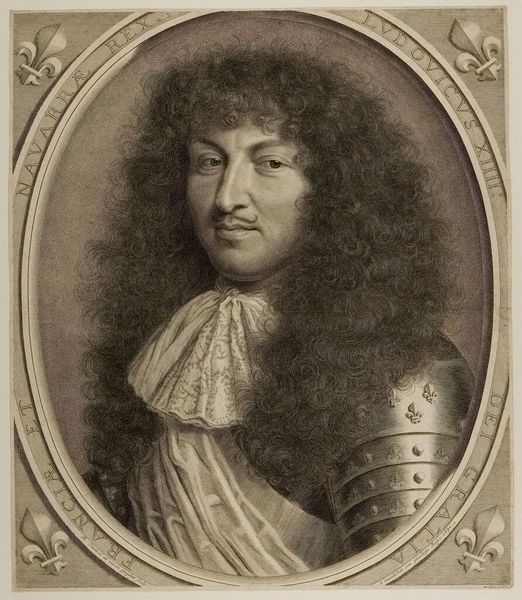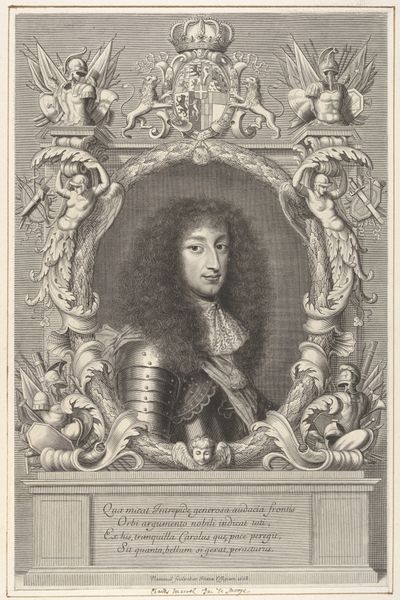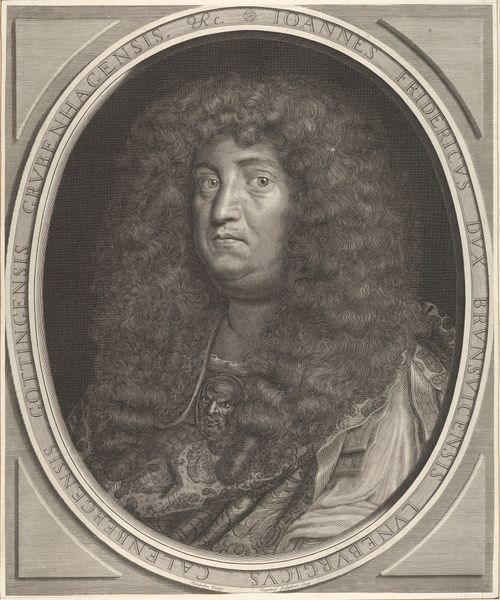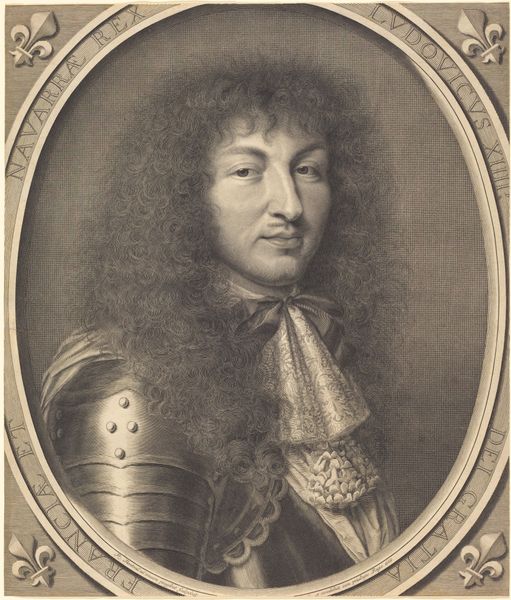
print, engraving
#
portrait
#
baroque
# print
#
engraving
Copyright: National Gallery of Art: CC0 1.0
Editor: So, this is "Philippe, Duc d'Orléans," an engraving by Robert Nanteuil from 1671. I’m immediately struck by the... well, the sheer *volume* of his hair! What insights do you have about this piece? Curator: It’s important to see this portrait as a strategic piece of image-making. Consider the historical moment: Louis XIV's France. The aristocracy was being subtly but surely brought under the control of the Sun King. What do you think the effect of depicting Philippe with such... theatricality achieves in that context? Editor: Hmm, the hair and the lace… they almost feminize him, right? It contrasts with the armor. Curator: Precisely! This isn't just about aesthetics; it's about power and perception. Philippe, Louis XIV's brother, was known for his… unique style. This portrait presents a carefully crafted image. It uses flamboyance to subtly project influence. Who controlled image making, how did they reinforce power structures? Think about Nanteuil's role here – an artist working within the confines of a royal court. What choices did he make? Editor: I hadn’t considered it from the angle of constructed image management! It is also intriguing how art can offer insight into hidden realities, and subtle hints that the power might not have been as rigid as perceived! Curator: Indeed. Looking at art as cultural production broadens our understanding. This Baroque portrait becomes a study of court dynamics, gender roles, and the controlled distribution of imagery to construct, support, or occasionally, undermine royal power.
Comments
No comments
Be the first to comment and join the conversation on the ultimate creative platform.
